Related Research Articles

Mack Sennett was a Canadian-American producer, director, actor, and studio head who was known as the "King of Comedy" during his career.
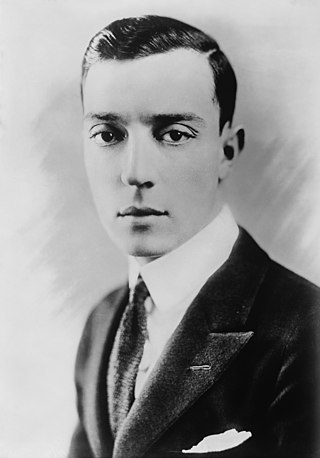
Joseph Frank "Buster" Keaton was an American actor, comedian and film director. He is best known for his silent films during the 1920s, in which he performed physical comedy and inventive stunts. He frequently maintained a stoic, deadpan facial expression that became his trademark and earned him the nickname "The Great Stone Face".

The Hollywood Revue of 1929, or simply The Hollywood Revue, is a 1929 American pre-Code musical comedy film released by Metro-Goldwyn-Mayer. It was the studio's second feature-length musical, and one of their earliest sound films. Produced by Harry Rapf and Irving Thalberg and directed by Charles Reisner, it features nearly all of MGM's stars in a two-hour revue that includes three segments in Technicolor. The masters of ceremonies are Conrad Nagel and Jack Benny.

Delmer "Del" Lord was a Canadian film director and actor best known as a director of Three Stooges films.

Guadalupe Natalia Tovar Sullivan, known professionally as Lupita Tovar, was a Mexican-American actress best known for her starring role in the 1931 Spanish-language version of Drácula. It was filmed in Los Angeles by Universal Pictures at night using the same sets as the Bela Lugosi version, but with a different cast and director.

James Wesley Horne was an American actor, screenwriter, and film director.

Educational Pictures, also known as Educational Film Exchanges, Inc. or Educational Films Corporation of America, was an American film production and film distribution company founded in 1916 by Earle Hammons (1882–1962). Educational primarily distributed short subjects; it is best known for its series of comedies starring Buster Keaton (1934–37) and the earliest screen appearances of Shirley Temple (1932–34). The company ceased production in 1938, and finally closed in 1940 when its film library was sold at auction.

In the Good Old Summertime is a 1949 American Technicolor musical romantic comedy film directed by Robert Z. Leonard. It stars Judy Garland, Van Johnson, S. Z. Sakall, Spring Byington, Clinton Sundberg, and Buster Keaton in his first featured film role at MGM since 1933.
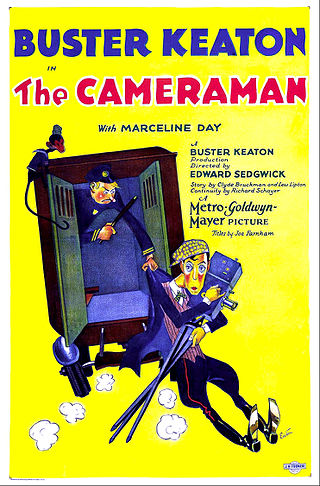
The Cameraman is a 1928 American silent romantic comedy film directed by Edward Sedgwick and an uncredited Buster Keaton. The picture stars Keaton and Marceline Day. The Cameraman was Keaton's first film under contract to Metro-Goldwyn-Mayer. It is considered by fans and critics to be one of Keaton's best, and was added to the National Film Registry in 2005 as being deemed "culturally, historically, or aesthetically significant".

Tit for Tat is a 1935 short comedy film starring Stan Laurel and Oliver Hardy. It is the only direct sequel they made, following the story of Them Thar Hills, which was released the previous year and includes the same two supporting characters, Mr. and Mrs. Hall, portrayed by Charlie Hall and Mae Busch. This "two-reeler" is notable too for being nominated for an Academy Award as Best Live Action Short Film (Comedy) of 1935, although it did not win. It also has a central theme similar to the comedy duo's 1929 silent short Big Business. In the opening scene of Tit for Tat, Oliver places a sign in the front window of his and Stan's electrical store. It reads "Open for Big Business", an allusion to the escalating revenge and "reciprocal destruction" common to both films.
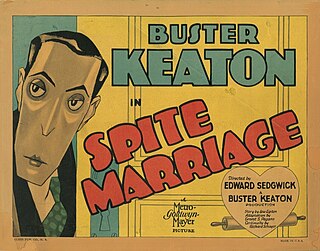
Spite Marriage is a 1929 American silent comedy film co-directed by Buster Keaton and Edward Sedgwick and starring Keaton and Dorothy Sebastian. It is the second film Keaton made for MGM and his last silent film, although he had wanted it to be a "talkie" or full sound film. While the production has no recorded dialogue, it does feature an accompanying synchronized score and recorded laughter, applause and other sound effects in some scenes. Keaton later wrote gags for some up-and-coming MGM stars like Red Skelton, and from this film recycled many gags, some shot-for-shot, for Skelton's 1943 film I Dood It.
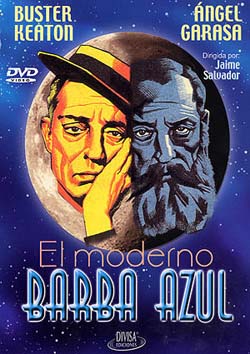
Boom in the Moon is a 1946 Mexican comedy science fiction film directed by Jaime Salvador and starring Buster Keaton. The film is notable both as Keaton's only Mexican production and as the last time Keaton had star billing in a feature film.
Pest from the West is the first short subject starring American comedian Buster Keaton made for Columbia Pictures. Keaton made a total of ten films for the studio between 1939 and 1941.

Earle W. Hammons, known professionally as E. W. Hammons, was an American film producer,. He produced more than 220 films between 1921 and 1938.
Grand Slam Opera is a 1936 American short comedy film starring Buster Keaton and produced by Educational Pictures.
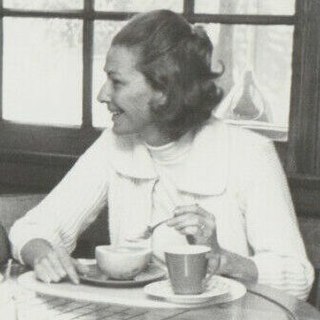
Eleanor Ruth Keaton was an American dancer and variety show performer. She was an MGM contract dancer in her teens and became the third wife of silent-film comedian Buster Keaton at the age of 21. She is credited with rehabilitating her husband's life and career. The two performed at the Cirque Medrano in Paris and on European tours in the 1950s; she also performed with him on The Buster Keaton Show in the early 1950s. After his death in 1966, she helped ensure Keaton's legacy by giving many interviews to biographers, film historians, and journalists, sharing details from his personal life and career, and also attended film festivals and celebrations honoring Keaton. In her later years, she bred champion St. Bernard dogs, was a gag consultant for Hollywood filmmakers, and was an invited speaker at silent-film screenings.

Adrian Brunel was an English film director and screenwriter. Brunel's directorial career started in the silent era, and reached its peak in the latter half of the 1920s. His surviving work from the 1920s, both full-length feature films and shorts, is highly regarded by silent film historians for its distinctive innovation, sophistication and wit.

Doughboys is a 1930 American Pre-Code comedy film starring Buster Keaton. It was Keaton's second starring talkie vehicle and has been called Keaton's "most successful sound Picture." A Spanish-language version was also made under the title, De Frente, Marchen.
The Buster Keaton Show, also known as The Buster Keaton Comedy Show, was a television series broadcast in 1950 starring Buster Keaton. It was broadcast over KTTV, which at the time was the Los Angeles affiliate of CBS.
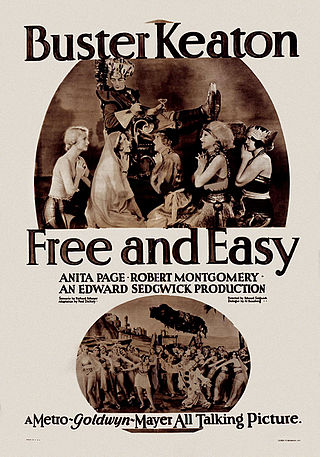
Free and Easy is a 1930 American pre-Code comedy film starring Buster Keaton. It was Keaton's first leading role in a talking motion picture.
References
- ↑ Dardis, Tom (1996). Keaton: The Man Who Wouldn't Lie Down. Hal Leonard. p. 297. ISBN 9780879101176.
- ↑ James Curtis, Buster Keaton: A Filmmaker's Life, Alfred A. Knopf, 2022, p. 462.
- ↑ Motion Picture Daily, "Hoffberg Sets a Title", Nov. 8, 1935, p. 2.
- ↑ Motion Picture Daily, "Hoffberg Closes Deal", Dec. 26, 1935, p. 10.
- ↑ Bergen Evening Record, Dec. 20, 1935, p. 25.
- ↑ The Exhibitor, Feb. 1, 1936, p. 41.
- ↑ Film Daily, Jan. 17, 1936, p. 8.
- ↑ Vineland Times Journal, July 20, 1968, p. 10.
- ↑ New York Amsterdam News, Apr. 29, 1972, p. D5.
- ↑ New York Daily News, p. 31.